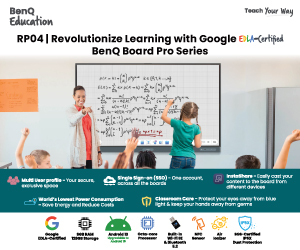IL&FS
Understanding technology in educationAshis K. PaniRam Kumar KakaniOur experience of coordinating management education programmes in virtual classrooms at the XLRI School of Management, Jamshedpur, has impacted upon us the importance of highlighting that interactivity is what makes the internet really different. Over the past few years, terms like ‚Ëœinteractivity‚ and ‚Ëœcommunity‚ have suffered considerable abuse and devaluation. Nobody would describe a group of people in a nightclub or a discotheque as a community. Or if you turn the pages of a magazine or book, that hardly qualifies as interactivity. Yet, if you click a link on the worldwide web, it is described interactive activity. The reality however, is that the web is the antithesis of interactivity and community.We have raised this issue ab inito to highlight the difference between the traditional classroom and e-learning environments. We define e-learning as a combination of learning, service and technology to provide anytime, anyplace learning. It is radically different from classroom and correspondence-based distance learning mechanisms. Based on our teaching experience both in traditional and virtual satellite-based class-rooms, we have come to the conclusion that in traditional classrooms students ‚Ëœlearn with people‚ whereas e-learning is about ‚Ëœlearning with content‚. Broadly speaking, learning with content is enabled with the assistance of software often known as a ‚Ëœlearning management system‚ which provides integrated services such as (a) the creation and distribution of on-line learning material, (b) communication and collaboration between stakeholders, and (c) the management of instructional systems. Indeed in e-learning, it is the very elimination of people ‚with consequent reduction of interactivity and community ‚that has attracted many businesses to the worldwide web. When we remove people, we also reduce costs, bureaucracy and a large number of people-related hurdles. However one of the biggest drawbacks to e-learning is that basic interactivity on the web fails very often and this leads to the failure of many e-learning initiatives. For example, there are problems with straightforward networking tools such as e-mail, conferencing, news groups etc because they were not specifically designed to support educational activities. Consequently instructors and to a lesser extent students, have to invest great effort into reformulating traditional classroom activities to make them compatible with networking systems. Adding a new dimension to the field of technology-enhanced learning are ‚Ëœvirtual classrooms‚. Their essential differentiating characteristic is that while traditional classrooms are instructor centric, virtual classrooms are learner centric. Virtual classrooms aggregate learners into virtual communities which can interact with each other. The wonder technologies employed range from conferencing, web, library, peer chat, mentoring, and company intranet to learning portals and mobile phones. These technologies if used intelligently can fully engage students in the learning process through interactive, dynamic environments involving student, on-line materials and instructor.But while e-learning can ensure efficient utilisation of scarce resources and egalitarian and speedy distribution of new knowledge, it is not without its limitations. Student motivation and interest is critical and challenging which explains high drop-out percentages. Moreover traditional instructors need to appreciate that on-line instructors require more time to develop electronic course material. They also need to understand the need to re-orient it and enhance interactivity into virtual classrooms. For example, there are instructors who are great teachers in traditional classrooms but place them in a studio to broadcast with a camera before them (and no students visible in front), and they tend to lose their iconic status.Moreover contrary to popular belief, virtual classrooms are not always cheap. They often impose a limitation on the number of students to maintain quality of interaction. And technologies utilised in virtual classrooms need to be reliable, seamless, with hi-fidelity two-way audio and video clarity backed by efficient resource management. All these conditionalities require e-learning providers to budget long-term break-evens, flowing from high student satisfaction levels and consequential word of mouth publicity.Looking to the future, it‚s inevitable that education and learning at all levels will become incrementally technology driven. This is especially true of India which has to cover a lot of ground to update the knowledge and skills of its professionals in the new knowledge economy. Moreover lay people need to be taught survival skills to interact with changing cultures and society. These training and education needs require technology which is flexible and available on tap ‚ an advantage offered by virtual classrooms. But even so it needs to be clearly understood that online education cannot replace or substitute conventional classroom education. At best it is supplementary to the overall education process.(Ashis K Pani & Ram Kumar Kakani teach at the XLRI School of Management, Jamshedpur)















Add comment